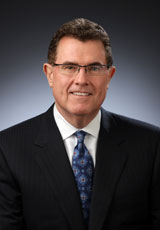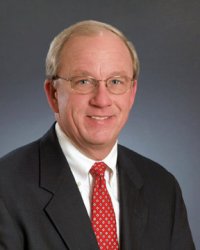Barring anything unexpected, today is the day that Houston City Council settles – for now, anyway – the Uber/Lyft issue. Houston is not the only place where transportation network companies are seeking to do business in Texas, of course. The Trib takes a look at the state of play around Texas.

“As the current city of Austin code is written, you still have to be a permitted ground transportation service to operate in the city of Austin,” said Samantha Alexander, a spokeswoman with the city of Austin’s Transportation Department. “As of right now, they are not permitted.”
Lyft and Uber drivers in Austin are at risk for a Class C misdemeanor ticket and possibly having their car impounded, Alexander said. She noted that in some cases, Austin police have ticketed Uber or Lyft drivers who were unaware that they were in violation of any city rules.
“Our big message right now is to make sure people aren’t breaking the law accidentally,” Alexander said.
Drivers have also been ticketed in Houston and San Antonio. In Corpus Christi, a 30-day grace period for Lyft and Uber drivers ends Tuesday, according to a recent statement from Corpus Christi Police Chief Floyd Simpson.
“There will be a dedicated enforcement effort following with intent to persuade compliance and ensure public safety,” Simpson said last month in an editorial for the Corpus Christi Caller-Times. Police officials did not respond to a request for comment for this story.
[…]

Texas cities are at varying stages of re-evaluating city regulations overseeing vehicle-for-hire services to see if there’s a way to allow the popular services to co-exist with traditional taxi services. In some cases, the debates have been hotly contested.
“Cities are recognizing they have to change, and that it’s a great thing if people have more options,” said Joseph Kopser, CEO of Austin-based RideScout, an app that provides real-time information about transportation services in different cities.
In Dallas, city officials drew howls of outrage last year after an interim city manager defied the usual protocol and placed an item on the City Council agenda without prior council discussion that would have effectively shut down Uber’s efforts in the city. The item was never approved and drew a city investigation.
In recent months, Dallas officials have been working with various stakeholders, including Uber and Lyft, to update their regulations. Next week, Councilwoman Sandy Greyson is planning to propose a new vehicle-for-hire regulation system that removes the current cap on taxi and limo licenses and allows companies to charge whatever fares they want. TNCs would have to abide by some new regulations, including paying for permits.
“What we’ve done is pretty much scrap all our current regulations and come up with an entirely new model where we will regulate all vehicle-for-hire providers the same way,” Greyson said. “This is a free-market proposal.”
[…]
Along with questions about safety and fees, equity issues are also drawing debate, such as whether companies like Uber and Lyft should be required to provide reliable taxi service to a city’s disabled residents. In many Texas cities, the city code requires traditional taxi fleets to include some wheelchair-accessible vehicles. Last week, a group of disabled people, including two in Houston and one in San Antonio, sued Uber and Lyft for violating the Americans with Disabilities Act.
Greyson, the Dallas councilwoman, said her proposal will require that a certain portion of a provider’s fleet be handicap accessible.
Chris Nakutis, an Uber general manager who oversees its Texas market, said the company partners with a wheelchair-accessible taxi service in Chicago. He did not rule out the company partnering with such services in Texas, but he took issue with the idea that the company should be required to in every market.
“We don’t own any vehicles. We don’t hire any drivers,” Nakutis said. “To the extent that there are wheelchair-accessible vehicles, we partner with them. Even if we don’t have wheelchair-accessible vehicles in a community, those people have the exact same opportunities they had before we entered the market.”
In addition to all that, Sidecar is coming to Texas later this year as well, and Uber is looking for drivers in Amarillo, El Paso, Lubbock and Waco. So expect the stories we’ve heard before to repeat themselves elsewhere. Meanwhile, in Austin, there’s a stakeholder meeting to kick the discussion off there. One way or another, things are happening and I have to figure a year from now the landscape will look very different.
I had not heard about that ADA-related lawsuit before reading this story. A Google News search shows that it’s gotten exactly zero mainstream media coverage. Taxi companies filed a lawsuit in April over the newcomers’ business practices, but this is an entirely different issue. The negotiations in Houston have included a possible requirement for Uber and Lyft to have some percentage of their drivers be able to accommodate disabled riders. I’m very interested to see how this shakes out.
But today is for Houston. As I’ve said before, I don’t have a good feel for who stands where on this, and at this point we don’t know what exactly the final ordinance will look like. Yesterday was the usual Tuesday pop-off session at Council, so it was the last chance before today’s vote for people to give their feedback on the proposals. Lauren Barrash, the founder and CEO of The Wave and a vocal critic of Uber and Lyft, sent me a copy of what she said to Council:
Good afternoon. In preparation for today’s public comment I wanted to shed light on a few new concerns I have regarding the vote tomorrow to pass the new Chapter 46.
First- Last week the limousine stakeholders were not notified that the ordinance was on the agenda which is why they did not have a presence at City Hall for public comment. They were also not aware of the amendments we all found out about from the Houston Chronicle on Tuesday morning.
Second- We were all emailed a new draft ordinance on Friday, June 6th. In speaking with some of the Council staff, that was not sent to you all.
Third- I have been trying, with no avail, to add some jitney revisions, but have been told, “we will have to get to after this one passes”. As a law abiding tax paying stakeholder, my concerns and recommendations should be weighted as heavily as these illegal operators forcing us to rush through this process
Last & most important- I want you to ask the question to them today if they are willing to stand before you & say with all honesty, they will comply 100% with all requirements in the new Chapter 46 Ordinance no later than the date required. And if not, you need to consider harsh consequences- impoundment, criminal charges, tickets, insurance notification because they have already displayed their lack of concern if tickets are issued. And if they say they will comply, you need to make certain you have the ability to enforce those laws. You also need to ensure there are harsh consequences for violation of the ordinance & be able to enforce those.
I have several questions regarding certain line items both in the section pertaining to jitneys as well as some of the Ordinance applicable to all of us, but am not being heard and am not able to ask those questions to ARA because they are busy accommodating the likes of Uber & Lyft.
Nothing in life is free. Free enterprise is not about not having to pay to be in business. It is about an open market for business to come in & operate legally. The media is hearing one side of this, but I sincerely hope you all have heard all three sides. It is hard to hear the real message hear when you have a shiny marketing, PR, and outreach plan from an $18 Billion company.
I ask that you think if it were your business at stake, would you want them to be a stakeholder. Equate it to someone like Chili’s, who has TONS of money, coming into a market & opening hundreds of restaurants on every prime piece of real estate, but not getting permits, inspections, plans. You wouldn’t let that happen.
I’m not sure how well that analogy holds up once an ordinance is passed, but I can certainly appreciate the frustration in the interim, once the newcomers went rogue. The Chron notes this while urging passage of an overhaul to the vehicle for hire code.
Mandatory prices, minimum fleet sizes and required advanced reservations serve little public good, and have no place in laws regulating Town Cars and other vehicles-for-hire.
But then the lobbyists got involved. Over the past several months, policy has turned to personal politics, and what should have been an easy vote has become a municipal mud fight. Instead of discussing regulations, council members are talking about individual companies.
Do you support Yellow Cab? Do you support Uber, a car service software company that connects riders with drivers? What about other newcomers like Lyft or Sidecar?
Council members should leave that choice to consumers. City Hall’s job is to write policy that achieves goals of safety, predictability and healthy economics. Right now, Chapter 46, which covers vehicles-for-hire, fails to meet those ends.
Frankly, Uber’s antics have worn thin. The $18.2 billion company’s gleeful noncompliance with laws across the nation has begun to smack less of civil disobedience and more of corporate privilege run amok. We’re witnessing the values of a Silicon Valley where men think they’re kings because they learned how to code.
It is hubris matched only by Houston’s current taxi monopoly, which acts as if it is entitled to exist without competition and thinks itself a saint because it accepts Metro vouchers to pick up the handicapped – a rather profitable form of charity.
Instead of duking it out in City Hall, these companies should take their fight to the people.
I suspect they will get that chance. And I will say again, it would be a good idea to review what gets done today in another six or twelve months, since no one really knows what the effect of the changes will be.
Finally, the Times notes that cab drivers are beginning to think more broadly about how to respond.
As services like UberX, whose drivers often use their own vehicles to transport passengers, make inroads in city after city, traditional taxi drivers are facing a loss of clout and livelihood. Years of rising gas prices and, in many places, stagnant fares have contributed to lower incomes for many drivers.
Eager to reverse the trend, taxi drivers in Chicago and other cities are for the first time seeking to form a national taxi drivers’ union — not just to gain leverage against UberX but also to pressure city officials and taxi companies to heed their concerns. The powerful taxi drivers’ union in New York City, with 17,000 members, is spearheading this effort, bringing its organizing expertise to Chicago, where it is pushing to unionize thousands of drivers and to link up with drivers’ unions in Philadelphia, Miami, Houston, northern Maryland and Austin, Tex.
Here and elsewhere, drivers express similar grievances: low pay, high leasing fees, police who issue too many tickets and taxi companies that cheat them. Despite those common problems, forming a national union will be difficult, in part, because taxi drivers are an independent, disputatious group with roots in dozens of countries.
[…]
The A.F.L.-C.I.O. supports the idea of a national taxi drivers’ union as part of its broader strategy to reverse decades of decline in union membership and power. Labor groups are realizing that they can no longer afford to ignore sectors like the taxi industry that employ many immigrant workers, whom unions view as a vital source of potential membership growth. And taxi drivers, whether Ethiopian, Haitian or Pakistani, are often leaders in immigrant communities around the country.
One snag these unionization plans face is that taxi drivers are usually independent contractors who are barred by antitrust law from colluding to set prices (although they can lobby city officials to grant fare increases).
Drivers say that some organizing efforts have been paying off. For instance the 1,200-member drivers’ union in Philadelphia helped secure three fare increases, lower fines for violations like having bald tires and a reduction in the fee for accepting credit card payments to 5 percent of the fare, from 10 percent.
Ronald Blount, president of the Philadelphia union, sees benefits in going national. “We can learn from each other. We can see what forms of pressure worked in other cities,” he said.
Probably too late to have any effect in Houston, but we’ll see how it goes elsewhere.























